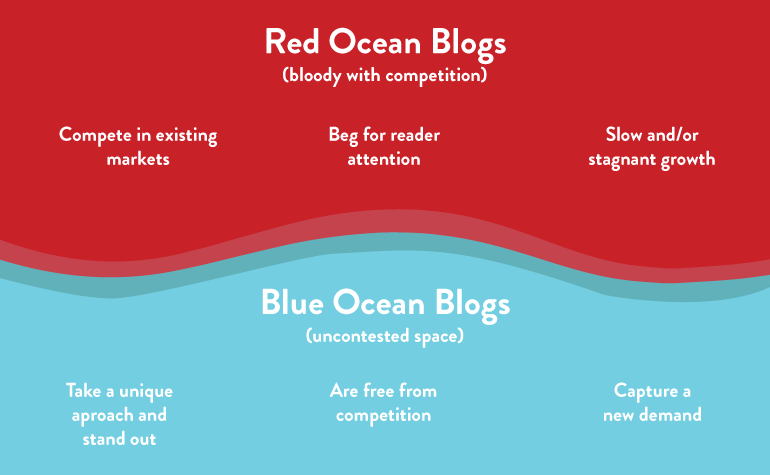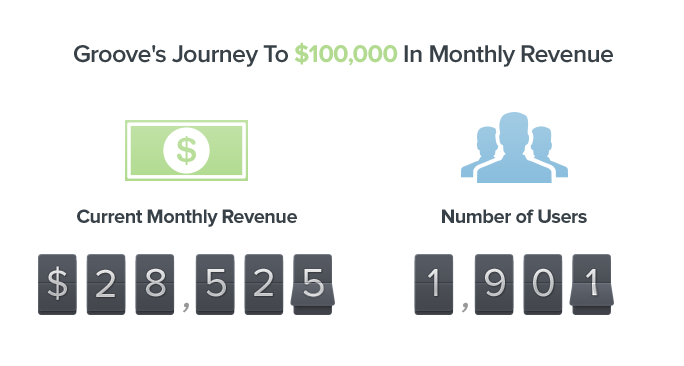 With the right strategy, content marketing can be a return-on-investment hero for your brand’s marketing mix.
With the right strategy, content marketing can be a return-on-investment hero for your brand’s marketing mix.
But in such a crowded airspace, it can be a tough gig for PR folks and content creators, alike.
The good news is there’s a clear path to standing out and getting results.
Often, brands that see little (if any) return on their investment will fail because of a copycat problem.
Here’s the story.
The Magical Funnel that Drips Money into Your Bank Account
The dream of content marketing is that it’s going to be a magical funnel that drips money into your bank account.
It’s a promised inbound sales machine with a prescribed formula:
high-quality content + audience building = increased revenue and business growth
- Step One: Create amazing content and optimize it with some SEO love.
- Step Two: Visitors experience this amazing content, fall in love with you and your brand.
- Result: Credit cards slide out of wallets while you sleep.
Well, just because certain tactics work for one brand, doesn’t mean they will work for yours.
So, how do you get creative and achieve results if your content marketing isn’t working?
To make it work, you need to start by making a simple (yet uncommon) change in your approach: find your competition-free content niche.
It’s the foundational place to start for any brand looking to increase revenue and growth tenfold through content marketing.
(And it’s the starting point of my content marketing formula.)
Make it Work with Competition-Free Content
So, what is competition-free content?
I learned this principle from a business book called Blue Ocean Strategy.
In the book, authors W. Chan Kim and Renée Mauborgne explain how there are two different oceans in business: a red ocean and a blue ocean.

The red ocean is bloody with competition. In these waters, you’re competing with many companies for the same customers via the same methods.
Everyone’s begging for attention in existing markets. Growth becomes slow, if not outright stagnant.
This is a brutal scenario for marketers, and one most of us work in today.
Contrast that picture of the red ocean with a blue ocean.
These are clear, competition-free waters. It’s a place where unique approaches stand out because no one else can compete.
In fact, finding the blue ocean renders competition irrelevant. The extreme upside is that you can capture new demand by doing your best work because you swim in your own waters.
Regular content marketing is just like swimming in the red ocean.
It’s filled with noise, thrashing, and fierce competition. Everyone’s begging for the same audience’s attention—and they’re doing the same things to get it.
We can also call this copycat marketing.
They’re simply trying to swim faster than the rest. This is what gives us a market bloody with competition and yielding stagnant growth.
Competition-free content adds tremendous value to your customers and audience that only you can produce.
It’s content that stands out through topic, structure, or media type. And it renders competition irrelevant because it exists in uncontested space.
The coveted inbound marketing funnel is a fringe case for content marketing in the red ocean.
There are a few brands that win here, but they are the exception rather than the rule.
Finding Differentiation
One of my favorite examples of this is GrooveHQ, a helpdesk software company.
GrooveHQ found their competition-free content by creating content no one else could.
Theirs is a perfect example because only they could talk about their numbers, their process, and their journey.
Plus, they did more than find a point of major differentiation.
When they first launched, they weren’t doing well with the generic content they were pumping out. They were publishing red ocean content.
The stakes were high, too. They were running out of money and had yet to find traction.
After an internal meeting, the team decided it was time to take a risk—a big one. They shut down their blog and went back to the drawing board.
During the next few months, they came up with a new blog, calling it, “A Startup’s Journey to $100,000 in Monthly Revenue.”

It would chronicle their successes and failures on the path to $1.2 million in recurring revenue—complete with numbers, warts, and shining victories.
The results were unbelievable. They added more than 5,000 subscribers and 535 trial signups in just five weeks, which generated $3,425 in revenue.
Their blog posts resonated because the very people they hoped would become customers were struggling with the same issues.
Their radical transparency meant they were talking about content that was wildly interesting to their target audience in a way no other company could.
This is competition-free content in action.
How to Find Your Competition-Free Content Niche
To find your competition-free content niche, follow a simple, three-step framework:
- Look
- Research
- Strategize
Look
The first step is to observe your competitors by dissecting the content they create.
- Do they invest in influencer marketing?
- Is their social media use in overdrive with a steady posting schedule or ads?
- Do they drive engagement through email marketing?
This step is about taking a critical look at the market and diagnosing strategies and tactics like a scientist.
Then ask yourself:
What content resonates most, and least, with our ideal customers?
This is the place you can find the gaps in the market—gaps you can use to serve your audience in unique ways.
Research
After surveying your competitive landscape, it’s time for some deeper analysis.
And while there are many savvy ways to research, it can be as easy as firing up Dr. Google for some basic research.
Simply search for key terms related to topics you compete on. These could be products, services, or language your brand needs to own.
Then, look at the top 10 search results and note two things:
- What makes their content consistent?
- What stands out most prominently?
You’re looking for nuts-and-bolts info here, such as:
How long is my competitor’s content? How many images do they use? Do they use strong calls-to-action? How strong are their customer testimonials?
Pull out a spreadsheet to keep track of these data points for a high-level view of what everyone else creates.
Strategize
After defining the content and methods of your competitors, it’s time for the fun part: creating your strategy!
However, there is a nuance here.
Finding your competition-free content niche isn’t simply about creating content that’s unique.
It’s also about creating content your team can execute at a world-class level.
Ask yourself:
- What are your competitors doing that’s similar? Determine what industry patterns you find similar to your team’s strengths. Did you find that are similar to your team’s strengths? These are opportunities to disrupt them and stand out. (They also behave as guardrails to avoid red ocean competition.)
- What’s in it for your customers? This question, above all others, should be your primary guide. Your tactics don’t matter to customers. They could not care less if they get value from you or your competition. What they do care about is the message and how it adds value to them. So, how can you do that better than anyone else? To build an audience of ideal customers, focus on creating and communicating value tailored to them.
- Does your content underserve some in your audience or customer base? There may be customer and audience segments who are key to growth, but who you are under-serving at this point. Is your content neglecting critical or potential buyers? If so, capitalize on this opportunity.
- What is your team’s proudest creation? What creation makes you most proud? Is it the content you create at an elite level, which works so well? These are things your team can do in their sleep. It might be written content, video, visual design, or any other medium. The point is, week in and week out, you can execute it well.
What is Your Competition-Free Content Niche?
This three-step content framework is an efficient way to find your competition-free content niche.
Its power is the singular clarity it brings to both your strengths and the competition you face.
Whether you’re looking to gain growth from measurable PR campaigns, social media marketing or any other form of content, you need to start by diving into the blue ocean of opportunity.